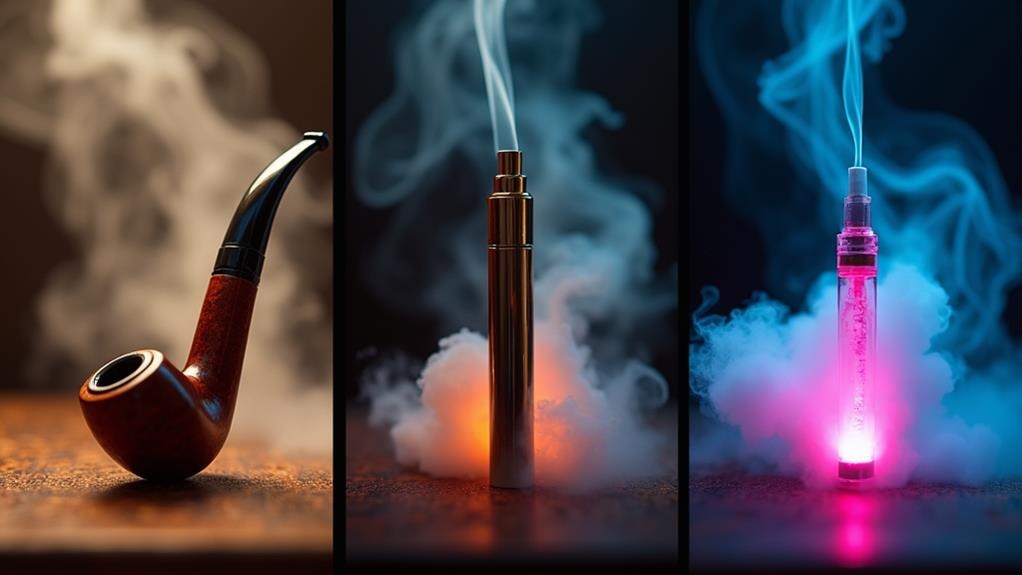The Evolution of Vaping Technology: Past, Present, and Future
- Posted on
- 0

The evolution of vaping technology has been rapid and transformative. From Herbert A. Gilbert's 1963 patent to Hon Lik's groundbreaking invention in the early 2000s, e-cigarettes have revolutionized tobacco consumption. The industry has experienced exponential growth, with market projections soaring to $47 billion by 2025.
Technological advancements have led to enhanced battery life, precise nicotine delivery, and customizable experiences. The rise of vaping culture has fostered community building and identity formation among enthusiasts. As the industry navigates regulatory challenges and health concerns, ongoing innovations promise refined and personalized experiences.
The future of vaping technology holds potential for further disruption and advancement in this dynamic field.
Key Takeaways
-
Early e-cigarette patents in the 1960s led to Hon Lik's modern design in the early 2000s, utilizing ultrasonic vaporization technology.
-
Rapid global expansion saw market projections grow from 15 billion in 2018 to an anticipated 47 billion by 2025.
-
Technological advancements include improved battery life, precise nicotine delivery, and customizable vaping experiences through variable settings.
-
Regulatory challenges worldwide have shaped the industry, balancing public health concerns with market growth and innovation.
-
The rise of vaping culture has fostered community building, identity formation, and lifestyle choices among enthusiasts.
Early Beginnings of Electronic Cigarettes
Innovation often stems from necessity, and the genesis of electronic cigarettes is no exception. The early beginnings of vaping technology can be traced to Herbert A. Gilbert's 1963 patent for a smokeless, non-tobacco cigarette.
Despite technological limitations, this pioneering design laid the groundwork for future developments, leading to a surge in patents for smoking alternatives in the 1990s a shift towards safer alternatives. Hon Lik's modern e-cigarette in the early 2000s revolutionized the concept, offering a viable alternative to traditional cigarettes and sparking global interest in vaping technology.
Birth of the Modern E-Cigarette
The modern e-cigarette's genesis can be traced to Chinese pharmacist Hon Lik's groundbreaking invention in 2003. Lik's device utilized ultrasonic vaporization technology to atomize a nicotine-containing liquid, marking a significant departure from previous electronic cigarette concepts. This innovation rapidly gained traction in China before expanding into European and American markets, catalyzing global adoption and sparking widespread discourse on the future of nicotine consumption.
As vaping technology evolved, various factors such as e-liquid flavors and nicotine strengths became essential to enhance user satisfaction and personalization in the vaping experience. This shift greatly influenced the industry's direction and consumer preferences.
Hon Lik's Groundbreaking Invention
Hon Lik's groundbreaking invention in 2003 marked a pivotal moment in the history of smoking alternatives. His e-cigarette design, utilizing ultrasonic vibration to vaporize nicotine-laced liquid, revolutionized smoking cessation technology.
The device's key components—battery, heating element, and nicotine solution—laid the foundation for future vaping innovations. As e-cigarettes evolved, understanding the mechanics of vape devices became essential for users looking for ideal flavor and vapor production, as the importance of device operation cannot be understated.
Lik's invention sparked global interest, driving rapid industry growth and paving the way for advanced health-oriented smoking alternatives.
Ultrasonic Vaporization Technology
Ultrasonic vaporization technology emerged as a game-changing innovation in 2003, coinciding with the evolving legal framework around vaping, which is vital for users to understand compliance while engaging with these products.
Chinese pharmacist Hon Lik's invention transformed the electronic cigarettes industry by:
- Employing high-frequency vibrations to vaporize nicotine-laced liquid
- Enhancing nicotine delivery compared to traditional designs
- Catalyzing global interest in e-cigarette technology
This ultrasonic approach laid the foundation for the Modern E-Cigarette, propelling the industry forward and offering users unprecedented control over their nicotine consumption. Awareness of vaping laws is pivotal for responsible usage and navigation of this evolving landscape.
Global Impact and Adoption
Bursting onto the global stage in the early 2000s, the modern e-cigarette rapidly gained traction as a potentially less harmful alternative to traditional smoking. The vaping industry evolved quickly, driven by user demand and technological advancements.
| Region | Adoption Year | Key Driver |
|---|---|---|
| China | Early 2000s | Invention |
| Europe | Mid-2000s | Harm reduction |
| USA | Mid-2000s | Tobacco alternative |
These systems sparked intense public health debates, challenging existing tobacco control paradigms and regulatory frameworks.
Global Expansion and Market Growth
The global e-cigarette and vaping market has experienced rapid international penetration, with projections indicating substantial growth from 15 billion in 2018 to over 47 billion by 2025. This expansion can be attributed to the increasing awareness of vaping's safer alternatives to smoking, as well as the rising demand for diverse flavors that cater to consumer preferences.
North America currently dominates the market, while the Asia Pacific region is poised for the fastest growth, driven by countries like China, Japan, and South Korea. However, regulatory challenges worldwide, including taxation and public health concerns, have emerged as significant obstacles to the industry's expansion, necessitating adaptation and strategic planning from market players.
International Market Penetration
Expanding rapidly across international borders, vaping technology has experienced significant global market penetration since its introduction in the mid-2000s. The industry's exponential growth is evident in:
- Market valuation reaching $12.41 billion in 2019
- Projected CAGR of 12.8% from 2020 to 2027
- Anticipated market value of $32.11 billion by 2027
The future of vaping technology, including pod systems and Liks invention, is poised to reshape public perception of alternatives to traditional cigarettes, particularly in emerging markets like Asia-Pacific.
Regulatory Challenges Worldwide
As vaping technology gained traction globally, regulatory bodies worldwide grappled with the challenge of addressing this novel industry. Concerns over potential health risks led to bans and restrictions in several countries.
Regulatory challenges emerged as governments sought to balance tobacco control efforts with the industry's rapid growth. The FDA's classification of e-cigarettes as drug delivery devices sparked legal battles, while new policies and industry associations formed to navigate the evolving landscape.
Technological Advancements in Vaping Devices
Vaping technology has undergone a rapid evolution since its inception, with each generation of devices bringing significant improvements in performance, usability, and customization options.
Sophisticated devices now offer:
- Advanced battery technology with enhanced safety and longevity
- Precise control over nicotine delivery systems
- Customizable vaping experiences through variable wattage and temperature settings
These advancements have transformed vaping into a highly controllable drug delivery method, with ongoing innovations promising even more refined and personalized experiences for users seeking ideal performance.
Rise of Vaping Culture
The emergence of vaping culture has profoundly influenced the perception and adoption of e-cigarette technology. Vape shops and online forums have become central hubs for community building, knowledge sharing, and identity formation among vaping enthusiasts.
This cultural shift has given rise to unique phenomena such as cloud-chasing competitions, further solidifying vaping as both a hobby and lifestyle choice.
Community and Identity Formation
Numerous factors have contributed to the rise of a distinct vaping culture, fostering a sense of community and shared identity among enthusiasts.
The Evolution of Vaping has transformed the vaping landscape, driven by human ingenuity and user experience. Vaping communities have emerged as catalysts for this cultural shift:
- Online forums and social media platforms facilitate knowledge exchange
- Vape shops serve as physical hubs for socializing and product discovery
- Vaping conventions and competitions reinforce community bonds
Vape Shops as Hubs
Brick-and-mortar vape shops have emerged as pivotal hubs in the burgeoning vaping culture, serving as more than mere retail outlets for enthusiasts. These establishments foster a sense of community, providing education on vaping as an alternative to traditional smoking.
Knowledgeable staff offer personalized guidance, facilitating the migration for smokers. Vape shops have become epicenters for social gatherings, competitions, and advocacy, shaping the perception and evolution of vaping technology.
Cloud-Chasing Competitions
Emerging as a spectacle within the vaping community, cloud-chasing competitions have transformed the landscape of vaping culture. These events showcase:
- Advanced vaping devices' technical capabilities
- Skilled vapers' expertise in producing massive vapor plumes
- The growing subculture within the vaping community
Cloud-chasing highlights trends and innovations in vaping technology, offering users enhanced battery life and performance. However, concerns about excessive nicotine consumption and potential negative effects of vaping persist, emphasizing the need for responsible practices in this evolving landscape.
Regulatory Challenges and Safety Concerns
As the vaping industry has rapidly evolved, regulatory bodies worldwide have grappled with the challenge of developing appropriate policies and safety measures. The emergence of smart technology in e-cigarettes has further complicated the regulatory landscape. Ongoing research into potential health problems and harm reduction strategies continues to shape policies, while the tobacco industry's influence remains a concern.
| Regulatory Challenges | Safety Concerns |
|---|---|
| Policy patchwork | EVALI cases |
| Youth access | Nicotine addiction |
| Harm reduction debate | Cardiovascular risks |
| Industry lobbying | Cancer potential |
| Long-term effects | Quality control |
Impact on Traditional Tobacco Industry
The rise of vaping technology has profoundly disrupted the traditional tobacco industry, catalyzing a seismic shift in consumer behavior and market dynamics. Tobacco companies have responded by:
- Acquiring e-cigarette brands
- Developing their own vaping products
- Investing in nicotine absorption research
This strategic pivot aims to maintain market share as combustible tobacco sales decline. The industry now faces challenges from drug administration regulations and debates over vaping as a safe alternative, forcing a reevaluation of longstanding business models.
Health Effects and Scientific Research
Delving into the domain of health effects and scientific research, vaping technology presents a complex landscape of potential risks and benefits. Early studies link e-cigarette use to respiratory and cardiovascular issues, while emerging evidence suggests increased cancer risk due to harmful chemicals in aerosols.
EVALI, associated with THC-containing products, raises environmental concerns. Longitudinal research is essential to understand long-term impacts, including lung cancer risks, of this form of nicotine delivery with varying nicotine strengths.
Role in Smoking Cessation Efforts
Vaping technology has emerged as a promising tool in smoking cessation efforts, with mounting evidence supporting its efficacy. Studies indicate e-cigarettes' superior effectiveness in helping smokers quit compared to traditional nicotine replacement therapies.
The ability to deliver nicotine more efficiently while reducing exposure to harmful tobacco products continues to shape cessation strategies. Key factors influencing success include:
- User engagement and commitment
- Complete shift from cigarettes to e-cigarettes
- Regulatory balance between benefits and concerns
These elements are enhancing the overall impact of vaping technology in the United States' smoking cessation landscape.
Future Innovations in Vaping Technology
As technology continues to evolve, future innovations in vaping devices are poised to revolutionize the industry. Advancements include smart device integration, biometric sensors for health monitoring, and alternative power sources like wireless charging and longer-lasting batteries.
Innovative e-liquid formulations and refillable pods aim to reduce environmental impact. Ongoing research drives the development of safer products, while heating element improvements and personalized usage data enhance user control and experience.
Frequently Asked Questions
How Has Vaping Evolved Over Time?
Vaping has evolved greatly, featuring advancements in battery life, improvements in e-liquid quality, and growth in device customization. The rise of pod-based systems and expansion of flavor options have further refined the user experience, enhancing control and satisfaction.
What Is the History and Background of Vaping?
Vaping's history encompasses early nicotine delivery mechanisms, e-cigarette development, and vapor production methods. Pioneered by Hon Lik, vaping device components evolved from cigalikes to advanced systems, offering users precise control over their nicotine consumption and vapor production experience.
What Is the Future of Vaping?
The future of vaping hinges on regulatory policies, device advancements, and nicotine-free options. Public health impact and evolving user demographics will shape technological innovations, potentially offering more personalized, safer alternatives for those seeking smoking cessation or harm reduction solutions.
How Much Has Vaping Increased in the Past Years?
Vaping has experienced rapid user growth, particularly among youth, with substantial increases from 2011 to 2020. This surge presents significant public health impacts and regulatory challenges, driven by industry innovations and shifting consumer preferences in nicotine delivery methods.
Conclusion
The evolution of vaping technology has been rapid and transformative, profoundly impacting smoking habits, public health, and the tobacco industry. As research continues to elucidate the long-term effects of vaping, future innovations will likely focus on harm reduction, customization, and enhanced user experience. The integration of smart technology, improved battery efficiency, and advanced e-liquid formulations may further revolutionize the industry.
Regulatory frameworks and scientific studies will play essential roles in shaping the trajectory of vaping technology and its societal implications. Our vape store, K Town Vapour Lounge, stays at the forefront of these technological advancements, offering customers the latest and most innovative vaping products.


Comments
Be the first to comment...